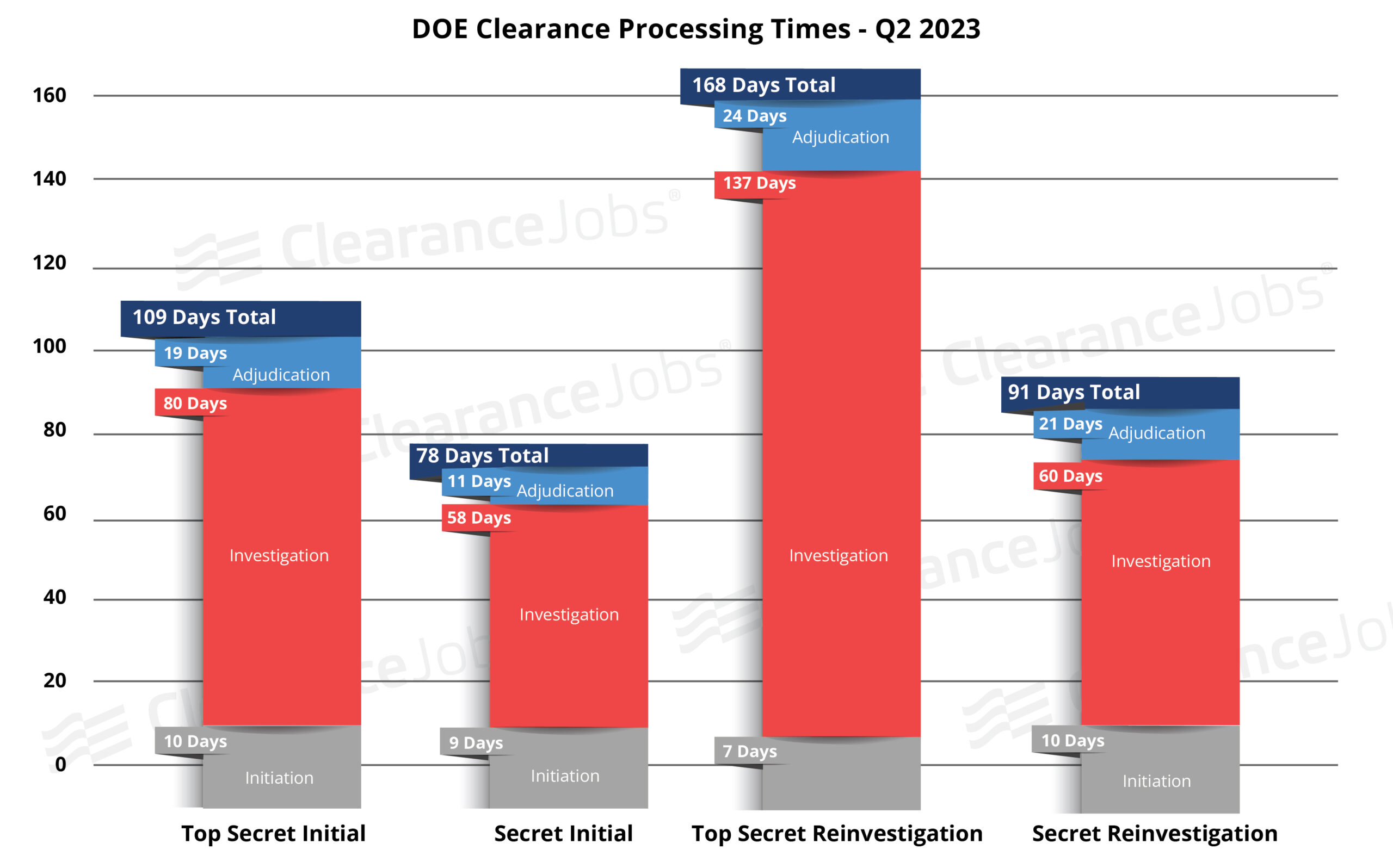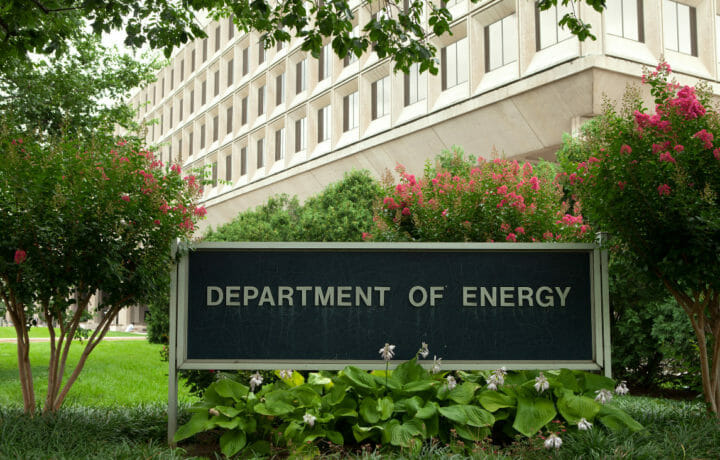Recently at the National Industrial Security Program Policy Advisory Committee (NISPPAC) Meeting, the Department of Energy (DOE) shared their timeliness performance metrics for security clearance processing times. The DOE reported performance metrics for 3,139 Top Secret and Secret clearances in the second quarter of fiscal year 2023, which is an increase of 421 decisions from last year. Processing times for Top Secret still average higher than Secret, with the background investigations for Top Secret Reinvestigations stretching out even longer.
DEPARTMENT OF ENERGY FY23 Q2 PROCESSING TIMES
The chart below shows the processing times for the DOE’s Fiscal Year (FY) 2023 second quarter for a Top Secret and Secret clearance. DOE Top Secret initial clearances took a total of 109 days, and TS Reinvestigations averaged 168 days in Q2 FY23, which is about 40 days more than TS Reinvestigations last year. DOE Secret initial clearances averaged 78 days – a one day drop from last year. And averaging the same as last year, Secret Reinvestigations stayed at 91 days.

Supporting the Department of Energy
While the Department of Defense (DoD) is widely recognized for its authority over security clearances, it’s important to acknowledge that other departments and agencies also engage in classified work. Beyond the nuclear program, various energy programs within the Department of Energy (DOE) require security clearances as well. In an ideal scenario, reciprocity functions smoothly, allowing a final Secret Clearance obtained by the DoD to translate into an L access authorization for a position within the DOE, while a final Top Secret clearance with the DoD should equate to a job at the DOE with a Q access authorization.
Within the federal government, different terms are often employed to refer to seemingly similar concepts. The DOE justifies the need for these distinct terms by emphasizing that it grants access to Restricted Data and special nuclear material. To ensure clarity regarding the differences in classified information, the DOE utilizes different terminology.
It’s important to note that while reciprocity exists between the DOE and DoD, there may still be certain factors or specific requirements that each agency considers when granting access to their respective classified information. These factors could include the nature of the information, the specific program or project involved, and any additional agency-specific guidelines or protocols.




